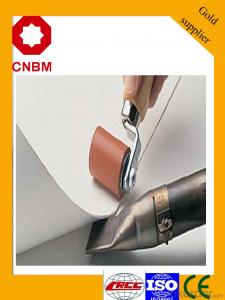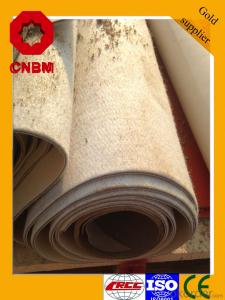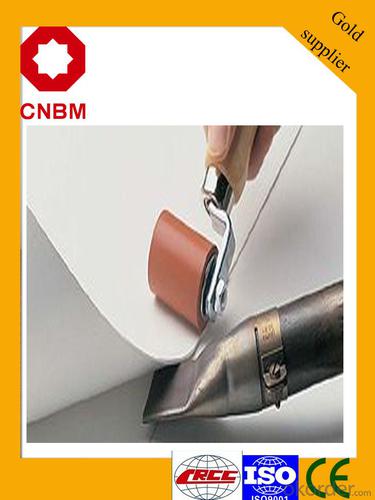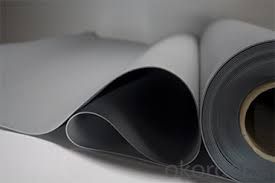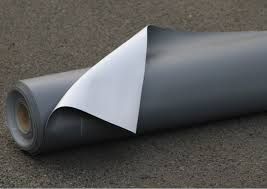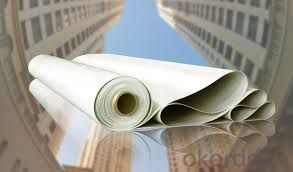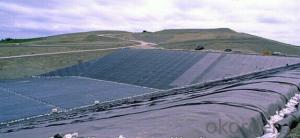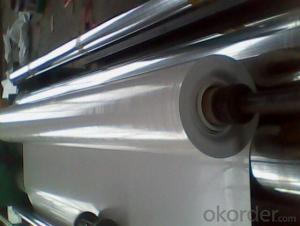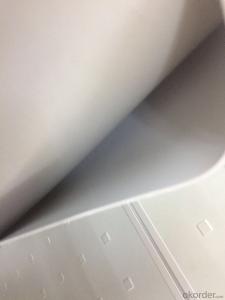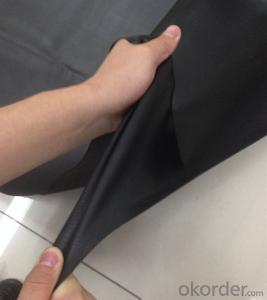PVC waterproof membrane About 1.2mm, 1.5mm, 2.0mm Thickness
- Loading Port:
- Tianjin
- Payment Terms:
- TT OR LC
- Min Order Qty:
- 2000 m²
- Supply Capability:
- 10000 m²/month
OKorder Service Pledge
OKorder Financial Service
You Might Also Like
Product description
Polyvinyl chloride PVC waterproof membrane is a kind of excellent performance of polymer waterproof material,PVC resin as the main raw material,add all kinds of special additive and anti-aging composition,the use of advanced equipment and advanced technology extrusion rolling is made.The product has the tensile strength and elongation high shrinkage of small,low temperature soft good,long life and other advantages, the products wide 1.2m to 3.0m, the thickness of 0.8-2.0 mm(special specifications can be customized),stable performance,reliable quality,construction is convenient.
Application Scope
The products are widely used in all kinds of civil construction,subway,tunnel,water conservancy,landfill site,chemical industry,metallurgy and other areas of waterproof seepage control,corrosion engineering
Features:
Excellent anti-aging property.
Puncture- resistant.
Welding construction,
High tensile strength, good elongation, good dimensional stability.
Good plasticity.
It has self-extinguishing from fire property.
Materials surface is smooth, fast color, stain resistance.
More wide, Wastage become less when being used.
Type:
N1—Exposed PVC waterproof membrane.
(It is mainly used as details treatment for exposed roof waterproof project)
N2—Non-exposed PVC waterproof membrane.
(It is mainly used as details treatment for non-exposed roof waterproof project)
L1—Exposed PVC waterproof membrane with fabric
(It is mainly used for exposed roof waterproof project)
L2—Non-exposed PVC waterproof membrane with fabric.
(It is mainly used for non-exposed roof waterproof project)
W1—Exposed reinforced PVC waterproof membrane .
(It is mainly used for steel structure roof exposed waterproof project)
W2—Exposed reinforced PVC waterproof membrane .
(It is mainly used for steel structure roof non-exposed waterproof project)
Advantages

Technical Parameters
No. | Item | Index | |||||
| 1 | Thickness of resin layer of the middle fabric ,mm≥ | - | - | 0.40 | 0.40 | 0.40 | |
| 2 | Tensile performance | Max tensile strength,N/cm ≥ | - | 120 | 250 | - | 120 |
| Tensile strength,NPa ≥ | 10 | - | -10 | - | - | ||
| Max elongation% ≥ | - | - | 15 | - | - | ||
| Breaking elongation % ≥ | 200 | 150 | - | 200 | 100 | ||
| 3 | Heat treatment size change rate%≤ | 2.0 | 1.0 | 0.5 | 0.1 | 0.1 | |
| 4 | Cold bonding | -25°c No cracks | |||||
| 5 | Watertightness | 0.3mPa,2h waterproof | |||||
Packaging & Shipping
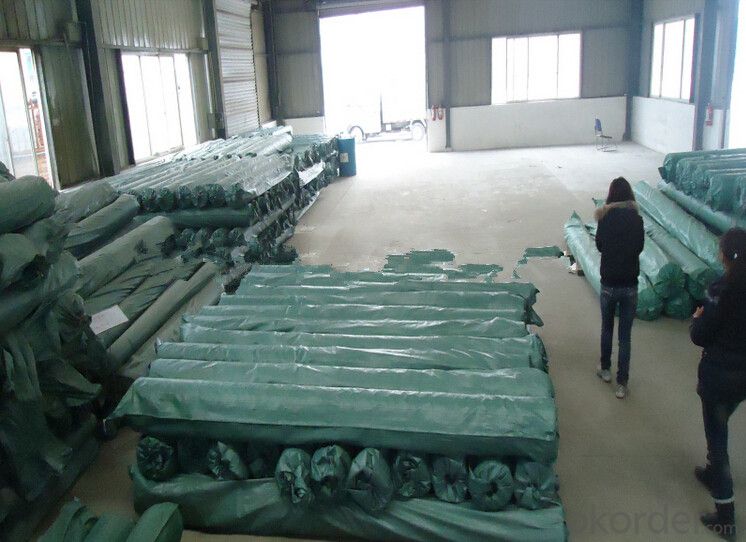
product show
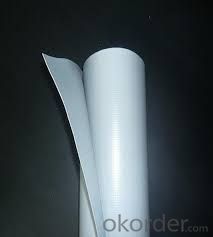
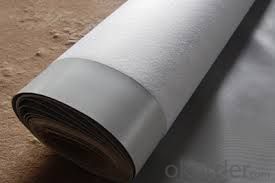
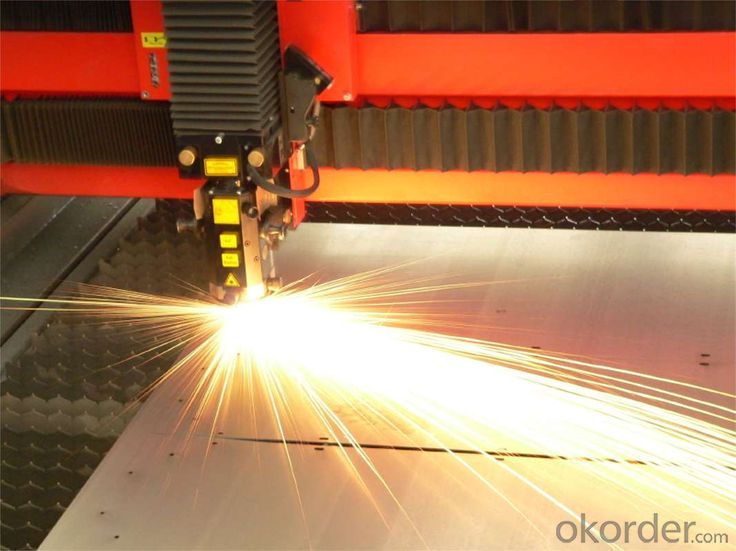
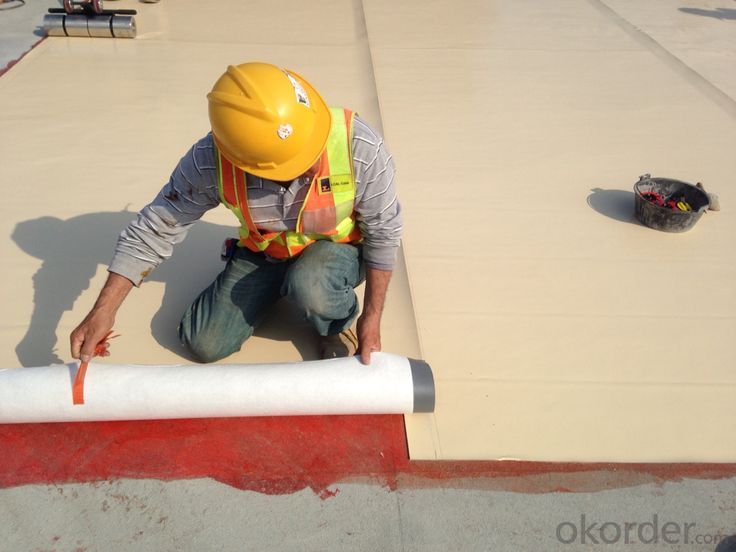
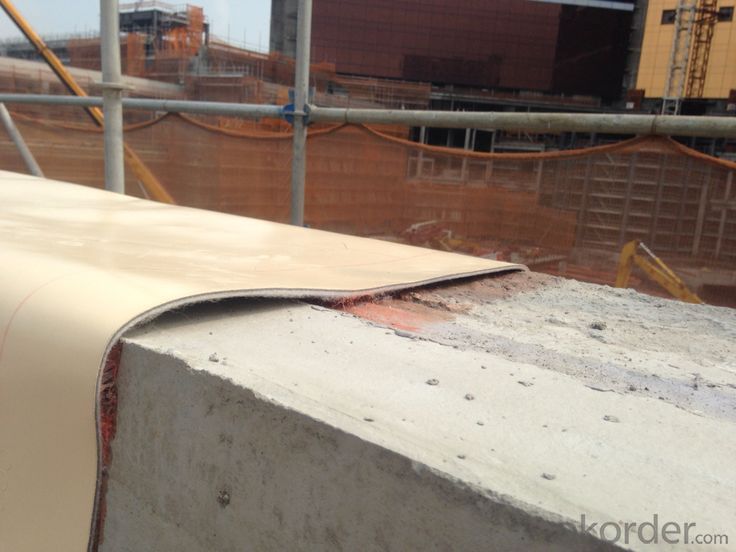


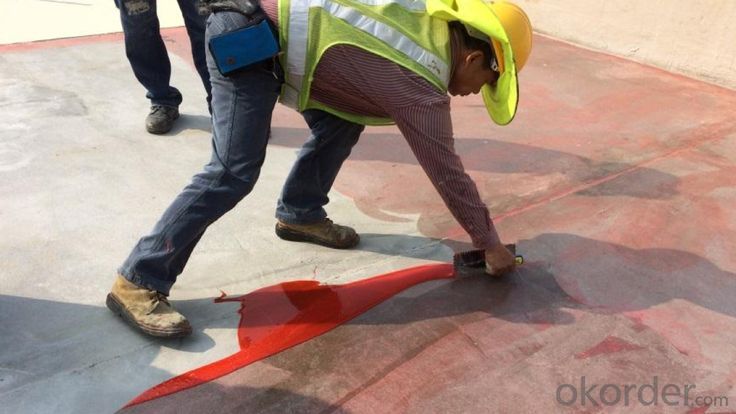
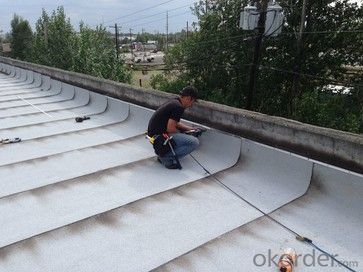
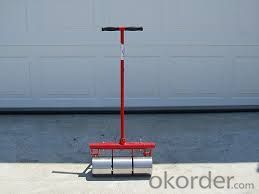
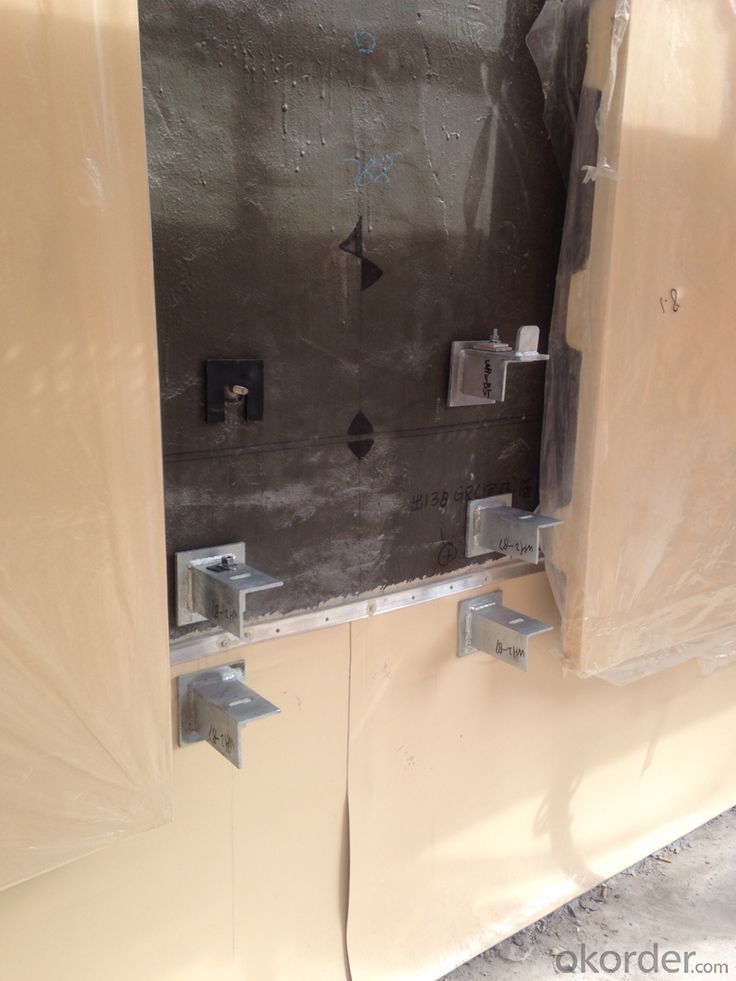
FAQ
Q: What's the delivery time ?
A: 3-5 days for 1-600 rolls, 10-15 days for container.
Q: What's the payment terms ?
A: TT/LC
Q: How do you make replacement with quality problems ?
A: New replacement will be packed into your next order or send to you directly after receive video or photo about quality problems.
- Q: Can a waterproofing membrane be used in swimming pools or other water features?
- Yes, a waterproofing membrane can be used in swimming pools or other water features to prevent water leakage and maintain a watertight environment.
- Q: Can a waterproofing membrane be used on precast galvanized surfaces?
- Yes, a waterproofing membrane can be used on precast galvanized surfaces. The membrane will provide an additional layer of protection against water penetration and help to prevent corrosion on the galvanized surface.
- Q: Can a waterproofing membrane be used for parking garage ramps and driveways?
- Yes, a waterproofing membrane can be used for parking garage ramps and driveways. These areas are often exposed to water, moisture, and other environmental elements that can cause damage to the structure over time. By applying a waterproofing membrane, it creates a barrier that prevents water penetration and protects the underlying concrete or asphalt from deterioration. This helps to extend the lifespan of the ramps and driveways, reduce maintenance costs, and enhance overall durability. Additionally, the use of a waterproofing membrane can also prevent water from seeping into the underground parking areas, preventing potential water damage and maintaining a safe and dry environment for vehicles and pedestrians.
- Q: What is the cost of a waterproofing membrane installation?
- The cost of installing a waterproofing membrane can fluctuate due to several factors, such as the size and complexity of the area that needs waterproofing, the type of membrane used, and the project's location. Generally, the cost can range from $3 to $10 per square foot. For a basic installation, which typically involves applying a liquid or roll-on membrane, the cost tends to be on the lower end of the price range. However, if the project requires additional preparation work, such as fixing cracks or uneven surfaces, the cost may increase. Furthermore, the cost can also be influenced by the type of membrane used. Various options are available, including bituminous, thermoplastic, and elastomeric membranes. Each type has its own advantages and disadvantages, which can affect the overall cost. Moreover, the project's location can have an impact on the cost. Labor and material prices may vary depending on the region or city, and contractors may also consider transportation costs, especially if the project is in a remote area. To determine the specific cost of your waterproofing membrane installation, it is essential to obtain multiple quotes from reputable contractors. Consulting professionals and discussing your specific requirements will help you get an accurate estimate for your project.
- Q: Can a waterproofing membrane be used in steam rooms?
- Indeed, the utilization of a waterproofing membrane within steam rooms is possible. This specialized membrane is crafted to obstruct water infiltration and is commonly employed in areas where moisture is prevalent, such as bathrooms, showers, and steam rooms. The primary function of this membrane is to create a barrier that hinders water vapor from penetrating the underlying structure and inducing harm. In the case of steam rooms, where elevated levels of humidity and moisture are abundant, the implementation of a waterproofing membrane is imperative in safeguarding the walls, floors, and other surfaces from water damage and the growth of mold. It is of utmost importance to select a waterproofing membrane that is explicitly designed for environments with high moisture content, such as steam rooms, in order to ensure sufficient protection and durability. Furthermore, for the membrane to effectively fulfill its purpose within a steam room setting, proper installation and adherence to the guidelines provided by the manufacturer are essential.
- Q: Are waterproofing membranes resistant to oil and grease?
- Waterproofing membranes are commonly resistant to oil and grease. They are specifically designed to prevent water infiltration and can also withstand exposure to chemicals like oil and grease. This resistance is achieved by using specialized materials and coatings that can repel or prevent absorption of oil and grease. However, it is crucial to mention that the level of resistance may differ based on the type and brand of the waterproofing membrane. Thus, it is recommended to refer to the manufacturer's specifications or seek professional advice to ensure the chosen membrane is suitable for the specific application and level of oil and grease exposure.
- Q: Can a waterproofing membrane be used for loading docks?
- Loading docks can benefit greatly from the use of waterproofing membranes. These membranes are commonly employed in various construction applications to safeguard underlying structures against moisture and water damage. Given the high levels of foot and vehicle traffic loading docks experience, along with the potential for water infiltration, installing a waterproofing membrane is highly recommended. By creating a barrier against water intrusion, a waterproofing membrane prevents moisture from seeping into the loading dock area. This is particularly crucial because moisture can compromise the structural integrity of the dock, leading to potential damage and safety hazards. With the installation of a waterproofing membrane, loading docks can be shielded from water-related issues such as corrosion, mold, and deterioration. Moreover, certain waterproofing membranes offer additional advantages beyond water protection. Some have anti-slip properties or resistance to chemicals and oils, which can be advantageous in a loading dock environment. These added features enhance the safety and durability of the loading dock, making it more suitable for heavy loads and frequent use. When selecting a waterproofing membrane for loading docks, it is important to consider the specific requirements and conditions of the dock area. Factors such as the type of traffic, load capacity, and exposure to harsh environments should be evaluated to ensure the chosen membrane is suitable for its intended use. In conclusion, a waterproofing membrane is an effective solution for protecting loading docks against water damage, enhancing safety, and prolonging the lifespan of the structure.
- Q: Can a waterproofing membrane be used in conjunction with other waterproofing methods?
- Yes, a waterproofing membrane can be used in conjunction with other waterproofing methods. In fact, it is quite common to combine multiple waterproofing techniques to provide enhanced protection against water intrusion. Waterproofing membranes are often used as a primary waterproofing layer, providing a barrier against water penetration. However, they can be further reinforced by using other methods such as sealants, coatings, or drainage systems. These additional methods can help to address specific vulnerabilities, such as cracks, joints, or areas prone to high water pressure. By combining different waterproofing techniques, it is possible to create a comprehensive and effective waterproofing system that offers maximum protection against water damage.
- Q: Can a waterproofing membrane be used for crawl spaces?
- Yes, a waterproofing membrane can be used for crawl spaces. Waterproofing membranes are commonly used in crawl spaces to prevent moisture and water infiltration, which can cause structural damage and promote mold growth. By installing a waterproofing membrane, it creates a barrier that keeps moisture out and helps maintain a dry and healthy crawl space environment.
- Q: How does a waterproofing membrane handle settlement cracks?
- A waterproofing membrane is designed to handle settlement cracks by providing a continuous and flexible barrier that prevents water penetration. Settlement cracks occur when the ground beneath a structure shifts or settles, causing the foundation to crack. These cracks can allow water to seep into the building, leading to moisture damage and potential structural issues. When a settlement crack occurs, a waterproofing membrane can be applied to the affected area to create a seamless and watertight seal. The membrane acts as a protective layer that prevents water from entering through the crack and migrating into the building. It also helps to maintain the structural integrity of the foundation by reducing the chances of further cracking and deterioration. The flexibility of the waterproofing membrane is crucial in handling settlement cracks. It can accommodate the movement of the underlying structure without compromising its performance. As the ground settles or shifts, the membrane stretches and contracts, ensuring that the crack remains sealed and the waterproofing system remains intact. Additionally, some waterproofing membranes are equipped with self-healing properties. This means that if a settlement crack does occur, the membrane has the ability to reseal itself to maintain its watertight integrity. This self-healing capability can minimize the need for frequent repairs and maintenance, saving time and costs for property owners. Overall, a waterproofing membrane is an effective solution for handling settlement cracks. It provides a durable and flexible barrier that prevents water infiltration, protects against further damage, and helps to preserve the longevity of the structure.
Send your message to us
PVC waterproof membrane About 1.2mm, 1.5mm, 2.0mm Thickness
- Loading Port:
- Tianjin
- Payment Terms:
- TT OR LC
- Min Order Qty:
- 2000 m²
- Supply Capability:
- 10000 m²/month
OKorder Service Pledge
OKorder Financial Service
Similar products
Hot products
Hot Searches
Related keywords
